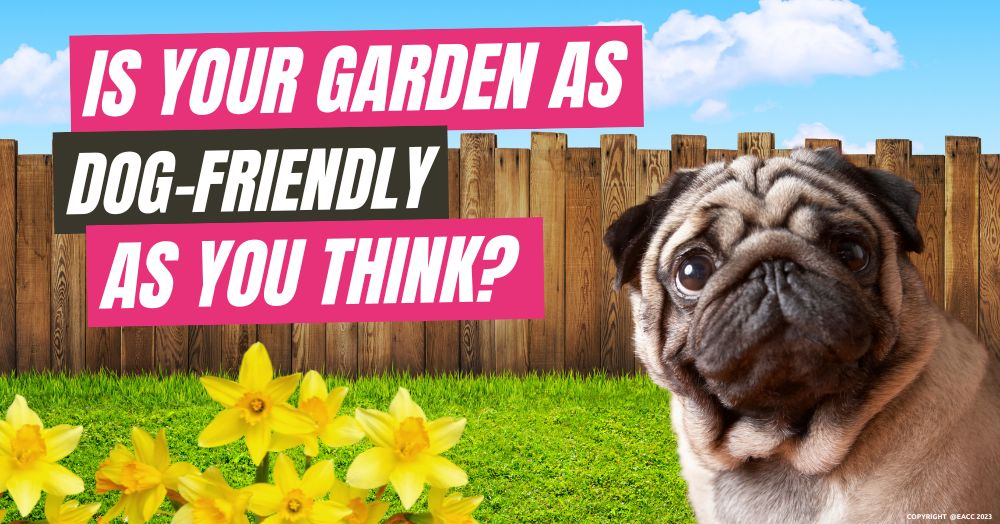
Guide to Creating a Dog-Friendly Garden
Are there hidden hazards in your garden that could make your pooch ill and leave you with costly vet bills?
Here’s a guide to keeping your garden safe and secure for your dog.
Fencing
The last thing you want is for your hound to escape onto the street and get hit by a car or pay an uninvited visit to the neighbours. If your dog is good at jumping, ensure your fence is high enough to contain them. Also, check there are no gaps between or below fence panels that a curious dog could squeeze through.
Plants
The good news is many eye-catching plants, such as lavender, rosemary and pansies, are easy to grow and non-toxic to dogs. However, familiar garden favourites such as daffodils, tulips, yew and laburnum can kill a dog within hours of ingestion. Conkers are poisonous too, and while they probably won’t kill your dog, they can leave them with a very upset tummy. For a complete list of plants to avoid, visit the Dogs Trust website.
Garden tools
Always lock away tools like secateurs and saws after using them so your dog can’t injure themselves on the sharp edges. It’s best to keep items like lawnmowers out of reach too.
Chemicals
Avoid using fertilisers and slug pellets (these contain metaldehyde which can quickly prove fatal to dogs and cats). If your dog is suddenly wobbly, drooly or having difficulty breathing after a stint in the garden, they may have eaten something toxic, so seek veterinary help immediately.
Chewing hazards
It’s normal for dogs to chew (which is why they love bones so much). With this in mind, don’t leave children’s toys or sports equipment lying around; otherwise, you could be in for a trip to the vet to remove a golf ball or shuttlecock from your dog’s stomach. Stones and gravel may not look appetising to you, but it’s not uncommon for dogs to ingest these too.
Protection in hot weather
Dogs can quickly dehydrate in the hot summer weather, so make sure there is at least one shaded area where your pooch can relax and always leave out a bowl of fresh water.
